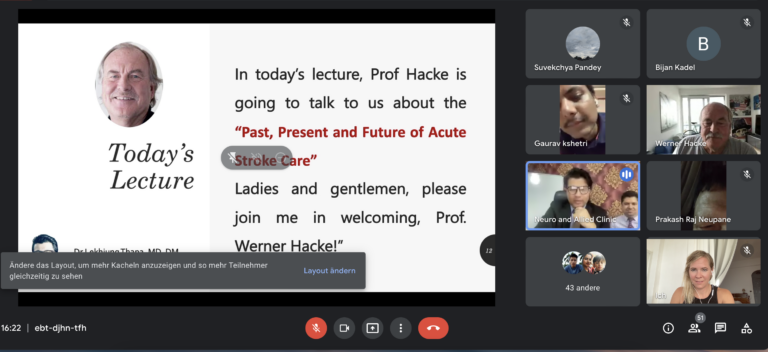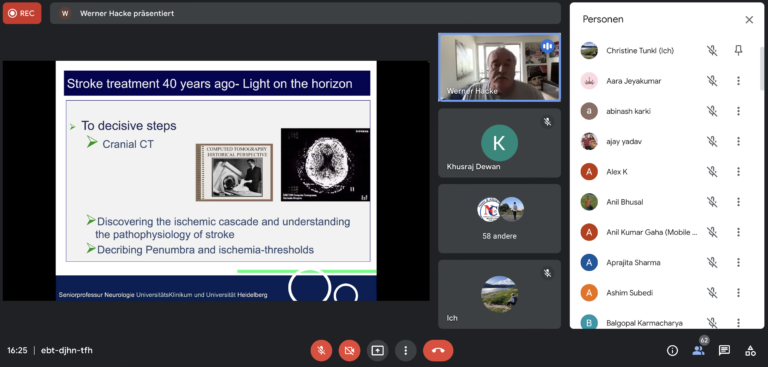Wow! That was memorizable! Professor Hacke gave a talk about “Past, Presence and Future of Acute Stroke Care” – and 80 doctors from Nepal listened excitedly! No matter if stroke experts or stroke newbie – Professor Hacke got us all equally thrilled!
The session started with a short and lovely presentation about Professor Hacke himself, given by Dr Lekhjung Thapa, founder of Nepal Stroke Association. How great to see the world’s most renowned stroke leader and Nepal’s most renowned stroke leader together in this meeting!

And nowadays – forty years later: We can not treat patients only with thrombolysis but also with thrombectomy. Nowadays we extend the golden time windows and learnt that tissue is even more important than time. We know about the value of stroke unit care and can save lives with decompressive craniectomy
So, what will the future bring? Will there be even newer techniques? Professor Hacke described that the future of stroke care will significantly be improved through AI.
But further he highlighted, that we already have all the knowledge to treat a stroke with a good outcome – but still only 10% of all hospitals world-wide are “stroke ready”. If a stroke patient in a good time window is treated with thrombolysis and thrombectomy, nearly every second patient will have a life after stroke with nearly no deficits at all – keep that in mind!
And what do you need to become a stroke-ready hospital? It’s not more than a CT scanner and a trained physician. And everyone can become a stroke-trained physician and even the resident should feel confident enough to give thrombolysis!!!
Emphasizing that stroke care is not restricted to specialists, but stroke care is possible for every doctor was so encouraging for all of us.
But how to convince patients’ party about thrombolysis? Well, it’s the standard of care in the rest of the world – and also in Nepal it should be available and affordable for every patient who can benefit from it. So we know about the obstacles we face in our part of the world. But Professor Hacke and Dr Lekhjung gave us so much enthusiasm that we can be the ones who can change the life of every stroke patient!
To sum it up: A talk about the past, presence and future of stroke care from Professor Hacke himself, is a talk none of us will ever forget 😉
